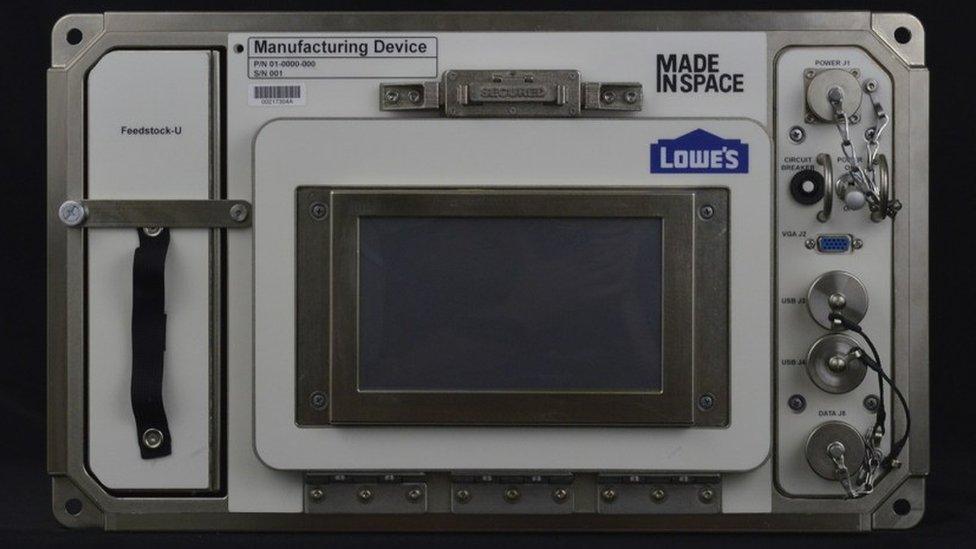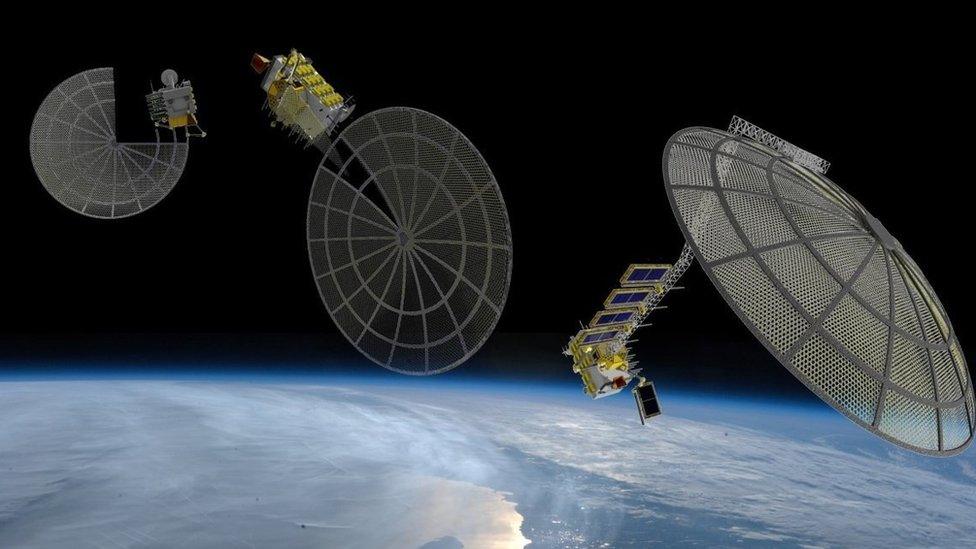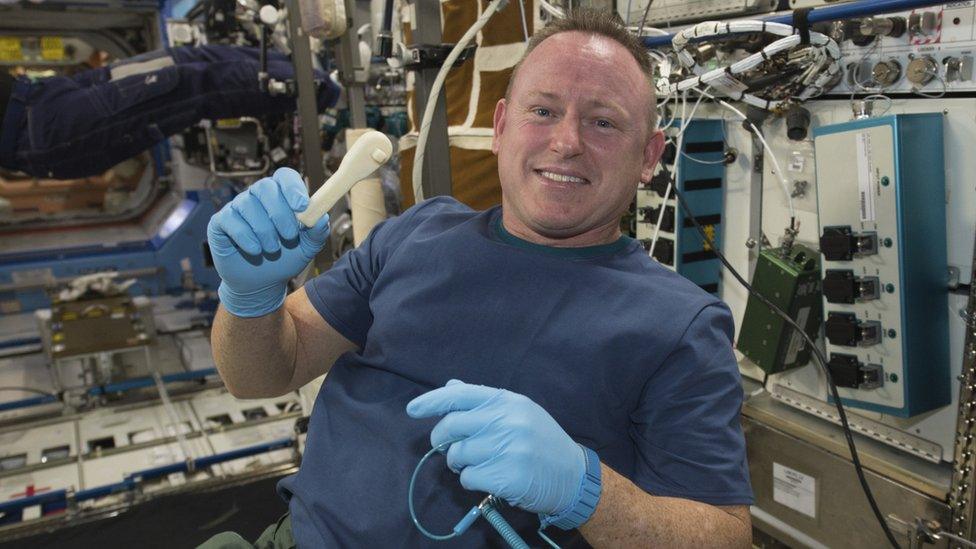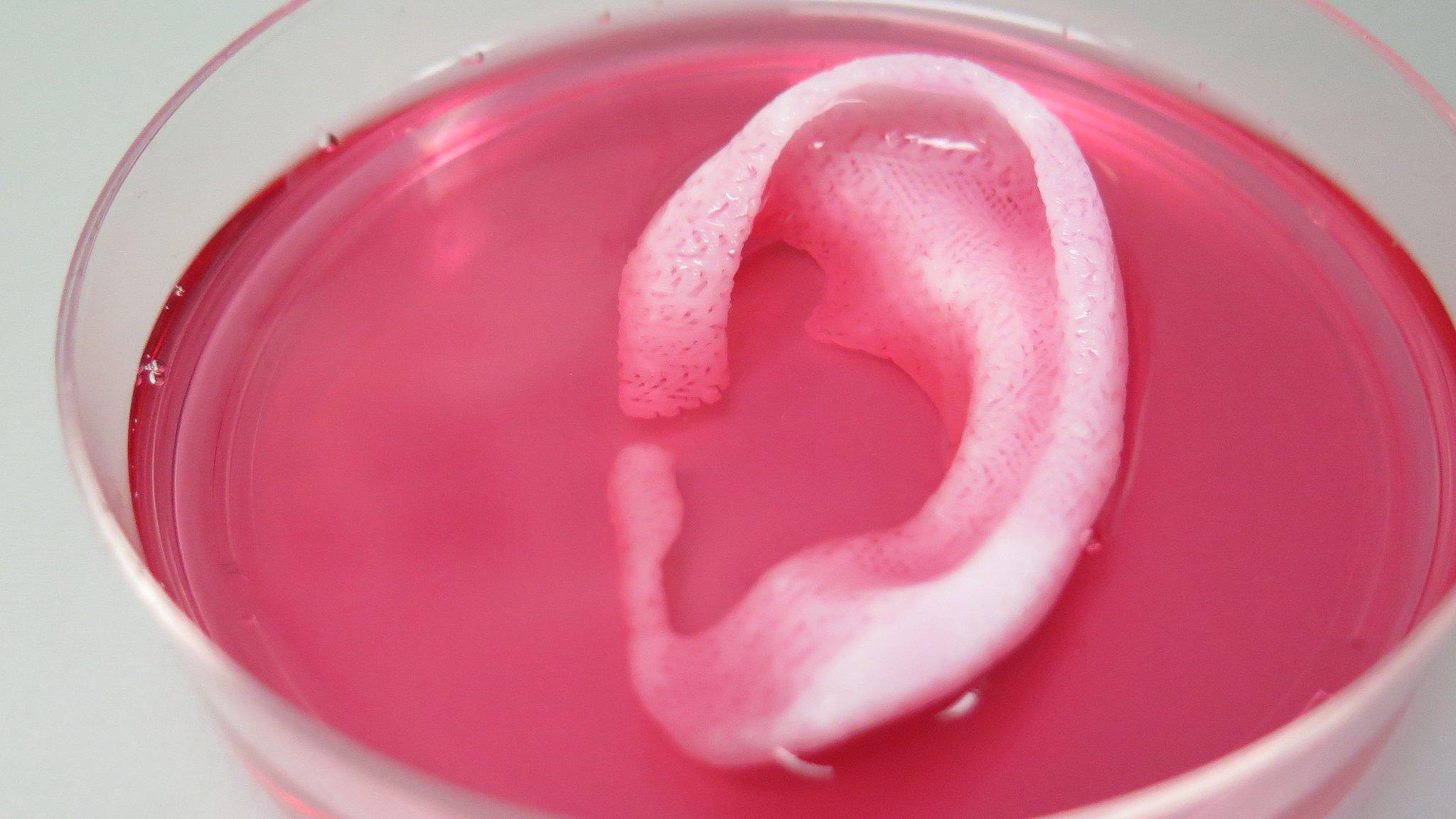Nasa and the amazing space printer
- Published
- comments
Watch: The 3D printer will be sent to the International Space Station next month
If you have ever struggled getting hold of a spare part for an appliance, consider the astronauts on the International Space Station (ISS), where deliveries are not exactly regular, and postage is rather extortionate.
There has only ever been one way to get something into space: blast it up there. It is expensive - every ounce of weight costs thousands of pounds.
If we are ever going to survive in space, this simply will not do. Sooner or later, we are going to have to start making things without relying on Earth.
The first step of this inspiringly significant process was unveiled recently by Nasa at its research park in Silicon Valley.

This is the 3D printer being sent to the ISS in March
On 23 March, a 3D printer will be blasted up to the six-strong crew in the ISS. It will be used to make spare parts, as well as experiments.
A prototype printer - the first manufacturing device ever in space - has already been trailed by the ISS crew. This new model, however, will see the project move into being fully operational.
"You can bring us a USB stick with your file, and we can digitally send it to space," says Andrew Rush, chief executive of Made In Space, the Nasa-funded start-up developing the technology.
"Via 3D printing we can make that object and completely avoid putting it on a rocket."

Huge structures can be created by 3D printing and assembled by robots, the Made in Space team say
'Origami'
Given $20m (£14.2m) by Nasa, Made In Space is also working on Archinaut, a system the company said would one day enable the manufacture of huge structures that could be assembled, in space, by robots.
Mr Rush plans "giant radio dishes that could service many people, or do amazing science and peer deep into the universe's past".
Right now, sending big items into space is a task described by Nasa as "like origami".
Structures are folded up for launch, and then expanded and constructed once in orbit.
Being able to build in space would remove the significant logistical restriction of working out what can survive been blasted off the Earth strapped to a rocket.

A prototype printer was sent up with the files needed to create a replacement ratchet
The team estimates it will be three to four years before the huge ambitions materialise.
The technology will be licensed out to commercial enterprises.
Not far up the road from Nasa, you will find Tesla - a very willing collaborator.
Until then, experiments with the small-scale 3D printer will be the focus of Made In Space's efforts.
In particular, the team is looking intently at how to use raw materials found in space - including on the surface of moons, and Mars.
"The space environment is a very valuable and unique environment," says Mr Rush. "We can make things that would just be impossible to create on Earth.
"This will eventually enable us to really live off the land, not only in micro-gravity, but on other moons and planets."
Follow Dave Lee on Twitter @DaveLeeBBC, external and on Facebook, external
- Published16 February 2016
- Published16 February 2016
